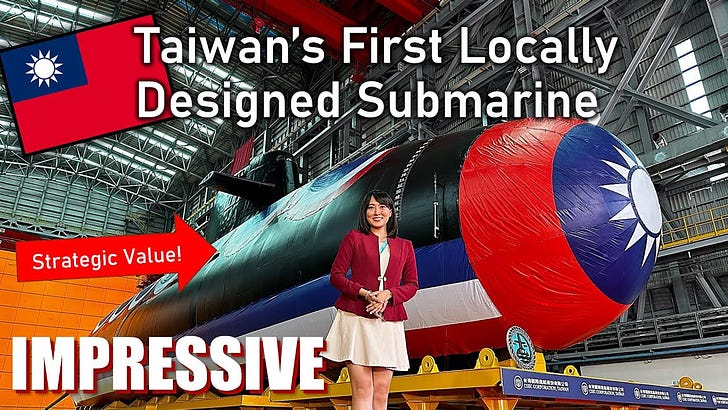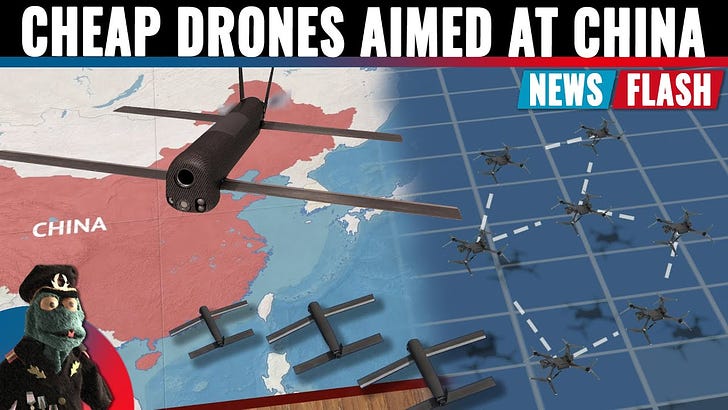Hi, I’m Gavin. This is my experimental newsletter that explores thinking - how we might think better and learn together as we do so.
I explore several key topics through the lens of several core themes: systems thinking, scenario planning, trends, and cross-disciplinary innovation. These often relate to key issues: climate change, pandemics, astronomy, physics, health, history, philosophy, culture, rocketry, conflict, the impact of technology on society and more (lol!). With a larger question behind it all: how do we progress and how do we progress better?
I hope you like where we go. (1,269! - welcome all new arrivals)
Gavin
PS: if you like the newsletter please share it! (And I always appreciate tweets about it too!) 🙏
If you support this newsletter and really like it you can also become a paid subscriber - you get nothing different except the satisfaction of knowing that you’re supporting this current weekly missive!
Reading list - the best stuff to read
(The best reads I’ve come across, with excerpts, links, authors and how long it will take to read. Climate change, COVID and China are consistently the stories at the top so are semi-permanent)
🌏 Climate change & biodiversity destruction
Yet more worrying numbers. It’s clear we are on a dangerous path.
Dr Will Hobbs, a sea ice scientist at the University of Tasmania, said that since April the rate of growth in Antarctica’s sea ice had been “very, very slow”.
“This isn’t just a big change from the average, but also from the previous record,” he said. “In May it was pretty obvious we were in for something spectacular.”
He said sea ice losses in the Ross Sea region were likely down to winds that had pushed the ice against the continent, bringing warm air. But weather couldn’t explain why ice was lost around the rest of the continent.
In a first-of-its-kind partnership between a major industrial company and a fusion startup,
Nucor NUE -2.26%decrease; red down pointing triangle
and Helion Energy plan to develop a 500-megawatt fusion power plant that would be placed at one of Nucor’s U.S. steel mills by 2030, the companies said.
That amount is enough electricity to power a few hundred thousand homes, about as much as a conventional power plant. Nucor is investing $35 million in Helion, which is backed by OpenAI Chief Executive Sam Altman.
The deal is a bet on fusion, a technology that can seem more science fiction than science and hasn’t yet produced electricity.
🇨🇳 China / Taiwan
Taiwan has launched the first of 8 domestically produced diesel-electric submarines.
Some analysis here:
Binkov looks at Chinese jet production:
🇺🇦 Ukraine / Russia
A good summary of perceptions of Ukrainian success (or lack thereof).
At some point, vulnerabilities might begin to appear in the Russian lines and present Ukraine with an opportunity for spectacular victories. Such an opportunity previously arose with Ukraine’s Kharkiv offensive in 2022. Similarly in 1918, the Allies finally could conduct a successful massed attack during the Hundred Days offensive when the German army began to collapse. Any attempt to conduct large-scale maneuver before then would be suicidal.
Ukraine has developed a drone submarine. Who knows where it will turn up.
“By operating below the waterline, UUVs have an obvious advantage in terms of stealth,” wrote Scott Savitz, a senior engineer at the RAND Corporation in California. “Moreover, striking below the waterline can be especially damaging.”
Worse, the Black Sea Fleet isn’t ready to detect and intercept small UUVs. The first indication drone subs are attacking, say, the Black Sea Fleet’s Crimean anchorage in Sevastopol, could be a series of underwater explosions.
❤️ How a heart starts to pulse
Interesting video. (3 mins)
🧪 PFAS
This newsletter has explored the world of forever chemicals on several occasions but this article from Bloomberg by Esmé e Deprez is one of the more disturbing. Read the whole thing. (7,000 words - 24 mins)
In essence a new source of PFAS/PFOA has been identified and it affects an enormous range of products. As far as I can tell, efforts are underway to ban this source in the EU by 2027.
Although Inhance says it can treat multiple types of plastic, including low-density polyethylene (LDPE) and polyphenylene ether (PPE), it mostly fluorinates HDPE. Used to make everything from milk jugs and cutting boards to underground pipes and toys, HDPE is versatile, usually opaque and more rigid than the average soda bottle, for example, which is typically made with polyethylene terephthalate, or PET, and cannot be fluorinated. It’s unclear what share of HDPE produced every year gets fluorinated. Inhance has indicated that it treats 25 million pounds of “plastic packaging articles” annually, which would likely represent a sliver of total HDPE production.
Still, fluorinated plastics are ubiquitous. Inhance says it does business with more than 175 plastics suppliers and more than 500 brands. As of 2018, according to the presentation seen by Businessweek, the agricultural chemical industry generated the biggest share of sales, at 40%, while the consumer market accounted for 16%.
“Our first initial thought was: It’s everywhere, so we need to pay attention to this one, because this is literally going inside people’s homes”
During an April visit to the lobby of Inhance’s facility in Allentown, Pennsylvania, a shelf displayed dozens of empty containers, with signage indicating at least some had been fluorinated. Among them were containers for shampoo, stain remover, gasoline, hand-cleaning wipes, hair-thickening oil, nail polish remover and juice. A sign extolled the benefits of fluorination for household and beauty applications, including food storage, laundry detergent, dish soap, liquid foundation and face moisturizers.
🧠 Fairy circles
Fairy rings/circles turning up…
Findings based on satellite imagery published Monday in the Proceedings of the National Academy of Sciences raise the possibility that fairy circles are significantly more widespread, occurring in up to 263 sites in 15 countries across three continents.
“We discovered fairy circle locations in many other places that we didn’t know existed before, because most of the work on this topic has been carried out in just two countries, Namibia and Australia,” said Fernando Maestre, an ecologist at the University of Alicante in Spain and an author of the study.
🔭 Big telescopes
Later this decade the enormous Giant Magellan telescope should have first light in Chile. Along with the JWST it will give enormous new capabilities for observers.
The 7th and final mirror has been cast.
"We will have a unique combination of capabilities for studying planets at high spatial and spectral resolution, both of which are key to determining if a planet has a rocky composition like our Earth, if it contains liquid water and if its atmosphere contains the right combination of molecules to indicate the presence of life," she added.
Philosophy Corner (a journey through thinking about thinking every week)
(A serialised section that started with Greek Tragedy and moved to philosophy. Something to spark ideas. Feel free to go backwards!).
This is a very good overview on cognitive biases by Charlie Munger. (1994) (75 mins)
Here is a shorter summary version.
Documentary
(A good thing to watch - also serialised - so feel free to go back through past editions!)
Podcast(s)
(The best stuff I’ve listened to, or been recommended by subscribers)
Mike Martin on outcomes in Ukraine (31 mins)
Newsletter subscriber Donie O’Sullivan was interviewed on both Katie Hannon’s show and on Qanon Anonymous about his CNN documentary on Negative 48 and conspiracy theories generally.
War on the rocks - as always. (31 mins)
Still in my tabs
(Or stuff I haven’t read yet, but looks promising)
Why rings of RNA could be the next blockbuster drug
The Republican Delusion Machine








